- Jon Whitney
- Sound Bytes
- Administrator
- Albums and Singles
 Described as a band that were overlooked and way ahead of their time, Space Needle sounds just like every band that never made it big but should have. This collection of recordings show that they were a talented bunch but if these songs are anything to go by, they are not all the hype makes them out to be.
Described as a band that were overlooked and way ahead of their time, Space Needle sounds just like every band that never made it big but should have. This collection of recordings show that they were a talented bunch but if these songs are anything to go by, they are not all the hype makes them out to be.
There is an almost unhealthy mix of songs on this album, I say this because while I think it’s great to hear a band who can change styles at a whim but equally it feels like Space Needle were wandering the musical landscape trying to find a unique sound. Unfortunately the liner notes for Recordings 1994-1997 don’t specify when each individual song was recorded so it’s impossible to tell from this document alone whether the change in styles was a progression or pure randomness. What the liner notes do make a big deal out of is how unlike their contemporaries Space Needle were. I think this is a gross exaggeration. Yes there are moments that made me think that they sounded like they knew what was to come in the new millennium. Most of the time they sound more like a band coming from the same area as their contemporaries but didn’t get the break.
Songs like “Sun Don’t Love Me” and “Old Spice” made me forget I was listening to a band that wasn’t The Flaming Lips. Right down to the voice these songs sounded exactly like what The Flaming Lips were putting out around that time. That being said, the songs are extremely good, “Sun Don’t Love Me” being a song that I’m likely to include in every mix CD I do for the foreseeable future. Equally there are songs that sound strikingly similar to Low and My Bloody Valentine. I’m not suggesting in any way that Space Needle are ripping anyone off or were part of a scene but I reject the validity of the hype surrounding them. There are plenty of solid songs like “One Kind of Lullaby” and “Never Lonely Alone” that although not ground breaking, they are highly enjoyable and well written.
However there are some tracks that stick out as being original. “Scientific Mapp” is a noisy affair that sounds like it was recorded yesterday. “(Untitled Duet)” and the opening track “Eyes to the World” both sound more modern than they are but not exactly mind blowing. As with the rest of the album, the songs are good but don’t like up to all that I read about them over the last month or two.
Space Needle are not the new Velvet Underground, they are not going to be appreciated by newer audiences in any astonishing way. What Recordings 1994-1997 shows is a good American indie band with a slightly experimental edge that could have gone further than they did. It’s nice to see an album like this and be exposed to a band I otherwise would never have heard of but I don’t feel like my life is any better for it.
samples:
Read More
- Gary Suarez
- Albums and Singles
With highly-touted Boka and Hotflush releases, as well as more than a few sought-after dubs, being caned by all the premier scene DJs, Distance's debut for Mike Paradinas' potent imprint proves he's got what it takes to break out from relative obscurity. The synth heavy A side "Traffic" is some sort of primal dancefloor monstrosity, growling and nashing its teeth within the first 30 seconds, and rarely letting up throughout its duration. This relentless storm will demand rewind after rewind, as I imagine it already has at countless South London parties. On the flipside, the more subdued yet far from tame "Cyclops" creeps along a bit with atonal bleeps, ghostly moans, echoing snare hits, and gut-rumbling bass. Those in the know have probably familiarized themselves with both of these killer cuts thanks to their appearance during Distance's fierce set during January's near-infamous Dubstep Wars episode on the Breezeblock radio program. Now, eager fans can get their paws on a copy of their own.
Read More
- Administrator
- Albums and Singles
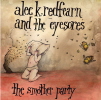 Mysterious, east European gypsies get together with crazy, German, acid eating Can fans only to allow some guy with an accordion into the party. This guy, Alec K. Redfearn, happens to be pretty sharp with the old squeeze box and he brings a couple of friends to stomp, shout, and holler beside him. With horns, violins, glockenspiel, and the kitchen sink in tow, this motley crew cranks out some righteous tunes with caustic bravado and surreptitious sensuality.
Mysterious, east European gypsies get together with crazy, German, acid eating Can fans only to allow some guy with an accordion into the party. This guy, Alec K. Redfearn, happens to be pretty sharp with the old squeeze box and he brings a couple of friends to stomp, shout, and holler beside him. With horns, violins, glockenspiel, and the kitchen sink in tow, this motley crew cranks out some righteous tunes with caustic bravado and surreptitious sensuality.
Joy is abundant the minute Redfearn begins to play the accordion, the second the first song starts. A playful attitude, highlighted by the motion of his sound, bounces from second to second and is supported in the form of singing violins and the pitter patter of drummer keeping time in the background. Vocal harmonies begin to weave with the pulse and sway of the other musicians as they dance about each other in circles - it's a magnificent way to open a record, a complex and catchy introduction to a band I'm now firmly addicted to. Fortunately the rest of the album doesn't disappoint. Redfearn and the Eyesores play with their sound, modulating it enough to evoke cartoon images of French sailors one moment and tormented, hungry thieves the next. They stay sweetly listenable the entire time, using their progressive influences to pepper already exquisite song writing.
Though the songs are obvious and immediate, there exists an air of surrealism all over the disc. The accordion is, at times, turned into an electric instrument, sounding like a guitar about to gasp its last breath; the drums escalate from light percussive spices to all out assaults of bombastic flare and titanic rhythms. The lyrics, where they exist, run the gamut from bloody details and awkward sexuality to mechanical, cold, stiff displays and demented takes on what an adjective can do for a word. Everything swims on the edge of the void, awaiting the tiniest push to send everything spiraling into obscurity. Redfearn and company are smarter than that, constantly swimming against the current and fusing the strange with the recognizable in a seamless fashion.
There's a lot to love about this record, but first and foremost is how musically accomplished it is. This band plays together so well it's scary. They obviously communicate very well, but on top of that are the songs themselves. There are memorable melodies all over this record, but the band is also obsessed with more obscure, surreal music and they integrate that side of their creativity into the music without forgetting about and obscuring the songs. The strings on this record sound so bright and alive next to their accompaniments, each instrument highlighting the one next to it. It's a miracle this band hasn't seen more press. They certainly deserve it, their ability to merge two distinct worlds of music into one is reason enough to check the band out. I keep coming back to this record for its exotic sound and wonderful melodies, though. No matter how much some of the album sounds like the child of a progressive rock band and Turkish mystics, the arrangements and the band's ability to play with tension and release are the most exciting and the most inviting and rewarding parts of an album that seems to have an endless supply of ideas to offer.
samples:
Read More
- Administrator
- Albums and Singles
 Darsombra is Brian Daniloski who is better known as a member of Meatjack. This solo project is a big step away from the sludgy blasts of metal that Meatjack produce. Ecdysis still showcases huge overdriven guitars but there’s no chugging. Instead Daniloski creates atmospheric drones and riffs and combines them with tape collages of voices and noise.
Darsombra is Brian Daniloski who is better known as a member of Meatjack. This solo project is a big step away from the sludgy blasts of metal that Meatjack produce. Ecdysis still showcases huge overdriven guitars but there’s no chugging. Instead Daniloski creates atmospheric drones and riffs and combines them with tape collages of voices and noise.
Ecdysis (which is the periodic shedding of an exoskeleton during the growth of an insect) is a good album but is let down by a couple of problems. One is Daniloski’s patchy use of effects: he uses some effects with mixed results. The pitchshifer on “Thinning the Herd” sounds awful, like someone who has just bought an effects pedal but hasn’t had the time to work on getting a good, original sound out of it. The use of this particular effect disguises what could be much more interesting music. However, there are far more places on the album where the guitar does sound fantastic, the use of Ebow and echo effect on “The Place where there is no Darkness” gives a cavernous vibe to the track.
While there are a couple of very good songs on Ecdysis, overall it is let down by too much meandering. Many of the songs could be shortened without losing any of their impact and the last two tunes did nothing for me at all. This leads to the second problem I had with the album: it seemed that all of the songs followed a similar structure of loop one piece of ambient noise/guitar, play low end riffs, twiddle about on the higher notes and finally adding the odd noise or two. Sometimes it works well, other times it doesn’t and comes across as formulaic.
When it works the result is “My House.” On this song there is a plodding drum machine and indecipherable vocals with a slow, fuzzed out riff in the background. Every now and then a sitar appears to completely shake up the song. The pitchshifter returns on this track but suits the music more here. It's followed by “Drag the Carcass,” which is just as good but a shift in mood. Daniloski loops some bass heavy feedback and plays an almost Eastern sounding set of scales over it. A vocal recording of a preacher fades in. The vocal is chanting in a completely different timing which creates a dizzying effect. As the preacher gets more worked up, Daniloski steps up his guitar playing and the intensity of the piece becomes palpable.
The parts I did like of Ecdysis unfortunately were outnumbered by parts that I found frustrating and tedious to listen to. This is music that I would normally like but something was just lacking.
samples:
Read More
- Administrator
- Albums and Singles
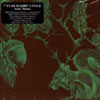 With some band members formerly of Deerhoof, one from Xiu Xiu, and a drummer who’s played with John Zorn, Tom Waits, and Fred Frith, such a pedigree carries high expectations for 7 Year Rabbit Cycle’s third album. Too bad, then, that it falls a little short. There are some fine moments, but too frequently their ideas seem to lack vitality and inspiration.
With some band members formerly of Deerhoof, one from Xiu Xiu, and a drummer who’s played with John Zorn, Tom Waits, and Fred Frith, such a pedigree carries high expectations for 7 Year Rabbit Cycle’s third album. Too bad, then, that it falls a little short. There are some fine moments, but too frequently their ideas seem to lack vitality and inspiration.
Some of the nicer sections include the untitled opener, with its hauntingly spacious vibes, as well as the eerie lengthy instrumental beginning “Magic Yam Part 2.” I also enjoy the bursts of dissonant rock that often show up unexpectedly on songs like “Pirate” and “Ciabatta,” and I wish those moments were more frequent.
Much of the album has a slow pace, which isn’t a bad thing in itself, but many of the songs have too many dramatic pauses and gaps, as if the group is playing under the weight of some transcendental state that unfortunately doesn’t translate well to this recording. There are places where the instruments are playing in different time signatures, making the moments when they hit together that much more meaningful, like on “Puppies,” but often these sections drag on after the catharsis has passed, diluting their impact. And some of the songs, particularly “1234,” just seem to plod on far too long.
I appreciate the group’s unconventional song structures and the chances they take with such unusual dynamics, but I couldn’t help but feel that the results are a little disappointing.
samples:
Read More
- Administrator
- Albums and Singles
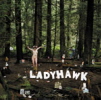 Forced dramatic line after faux energetic riff mar Ladyhawk's debut from beginning to end. Their proclaimed influences all catch up with them as the disc moves along, promising plenty but eventually crashing in a blur of warn out conventions and over-cooked clichés.
Forced dramatic line after faux energetic riff mar Ladyhawk's debut from beginning to end. Their proclaimed influences all catch up with them as the disc moves along, promising plenty but eventually crashing in a blur of warn out conventions and over-cooked clichés.
Jagjaguwar
I get absolutely no images, no rush out of this album unless the band is slowly plodding through ground I've already heard covered. I hate to say it, but despite the bluesy riffs and the rather country swagger that plays out behind the band's guitars, there's nothing that really attracts me to this band. On a couple of songs, Ladyhawk sound like an inspired band that's yet to bloom. On the rest of the album, they sound like band that wants to relive the favorite parts of their youth through the wail of feedback and the thump of swinging drums. Part of my dissatisfaction comes with how unbound the record is, being divided into several distinct parts. The first third is a visitation by ghosts of the grunge revolution: all distortion and pop structures rethought, the first few songs belong to the early 90s. The next two thirds are variations on country rock music and the lineage of the Byrds or The Flying Burrito Brothers. The songs just aren't powerful enough to carry that theme and in the end the album falls apart because the band is unsure of which direction to head in. Even worse, there are times when the two almost merge and those moments are outright embarrassing.
"The Dugout" sounds like my radio did when I was in junior high school. A chorus is followed by a verse ad infinitum with a bridge tossed in for good measure, just so the audience doesn't fall asleep from the repetition. My attitude towards this song doesn't stem from a dislike for good pop or rock music, it's just a result of hearing too much of the same thing for too long, most of it done with less skill, talent, or power than the original performances. Though I haven't had the inclination to give the lyrics a whole lot of my attention, their delivery reminds me of all the songs I heard around that time that dealt with the usual in the most usual of ways: heartbreak, loss, loneliness, depression, and all the usual suspects portrayed as the result of youthful ignorance or devious loved ones. I could be wrong and all these lyrics could be wonderfully written bits of poetry, but what does it matter when they're dragged through the same old sludge of woe and histrionics?
When the band slows their music down they're slightly more tolerable. In these relaxed moments they portray their intent more skillfully, showing a proclivity for epic songwriting and intensity through gentle progression instead of speed or volume. "Long 'Til the Morning" is an outstanding song, the only outstanding song on the album.
While this makes listening to the album more than once a bit easier, it does nothing to save it from its hero worship. If I wanted to listen to any of the music Ladyhawk plays, I could easily go to my collection and pick something out that not only acts as the origin of Ladyhawk's sound in some way, but is far more entertaining and worthwhile. There's no need for another record of music we've heard before, especially when this record has been released before, in several versions, over a course of 30 years, to much better effect.
samples:
Read More
- Administrator
- Albums and Singles
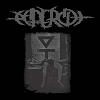 This CD-R by Papercut has moments of brilliance amid stretches of standard, by the book noise. By no means is it a masterpiece of noise but it's not a lazy effort by anyone's standards. There are enough shades of detail to make this a rewarding listen even if it won’t light the world on fire.
This CD-R by Papercut has moments of brilliance amid stretches of standard, by the book noise. By no means is it a masterpiece of noise but it's not a lazy effort by anyone's standards. There are enough shades of detail to make this a rewarding listen even if it won’t light the world on fire.
This self-titled release is better than I was expecting. The best way to describe it is elemental. The single track starts off sounding like a distant avalanche that progressively gets closer and closer. Gary Morrison, the man behind Papercut, shows a lot of patience, not going for the money shot too soon. Instead he slowly builds up peaks of noise before setting up a bass heavy lull. He repeats this over the thirty minutes using different textures. As it goes on there are sounds like icy winds roaring through the speakers. These sounds dissipate and low growls and squeals of feedback come to the forefront. The music is constantly changing, Morrison stops himself from getting stuck in a routine.
The last four or five minutes of the CD is seriously heavy. Pops and farts of fuzzy noise bubble over an intense roaring rhythm. It rounds off the track nicely, the preceding 25 minutes teased me along and this blast of power at the end provides the aforementioned money shot. The structure of the piece indicates that this wasn’t a random composition of odds and ends of tape but that there was some sort of outline that Morrison was following, giving a stronger piece overall.
As I expected from the name of the label, this release is heavily indebted to everything that was ever released on American Tapes, right down to the painted CD-R. I think it’s great that this sort of music is having an effect on artists but at the same time Morrison hasn’t really pushed the genre in any direction. It sounds great but at the end of the day there is little to separate this from the likes of Hive Mind or Wolf Eyes (when they’re having a good day). There are flashes of inspiration during the CD so I cling to the hopes that future releases will reveal more character and innovation.
samples:
Read More
- Administrator
- Albums and Singles
 This remix collection assembles an improbable group of producers and musicians to deconstruct and rearrange songs from the Knut back catalog. Justin Broadrick, Dälek, Mick Harris, and Oren Ambarchi are among those who are along for the ride.
This remix collection assembles an improbable group of producers and musicians to deconstruct and rearrange songs from the Knut back catalog. Justin Broadrick, Dälek, Mick Harris, and Oren Ambarchi are among those who are along for the ride.
Being entirely unfamiliar with the source material for a remix project is often for the better. Remixes tend to have the weight of expectations to deal with and often I find that the most interesting combinations on paper turn out to be the least interesting coming from the speakers. The fact that I know virtually nothing about Knut made Alter work for me in a way that it's not liable to for fans of the band, but that's probably for the best.
The remixes on Alter span a wide range of styles from noisy cut ups of the original tracks to versions that take just a few samples and create something altogether new, to versions that make Knut sound like a guest artist on someone else's record. I like this approach, but it can seem a little schizophrenic when listening to the whole record at once, and obviously some takes are going to work better than others.
Dälek and Justin Broadrick turn in mixes that sound as though they could easily be Dälek or Godflesh songs with someone else singing, which is fine with me and allows producers with a well-established sound to stamp their mark. The Spectre mix is a surprisingly sloppy piece that kills any potential with electronic drums that are stiff and out of time, but more experimental takes on the source material from Francisco Lopez and KK Null work pretty well. Lad + Andres submit a mix that makes me nostalgic for the slickly produced techno metal of late '90s Fear Factory, while the remainder of the tracks all offer something worth a listen.
A project like this is destined to have highs and lows and to have some issues with the tracks flowing like a regular album, but in the end Knut's remix project has made me interested in checking out the original material that inspired it so that feels like a mission accomplished to me.
samples:
- Spectre - Psychopathic Engine
- Ad's - Repressed Babylon
- JK Broadrick - h/armless
Read More
- Administrator
- Albums and Singles
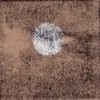 Getting the reissue treatment is this solo album by Tom Carter of Charalambides. Dedicated to the friends and times he left behind in Austin, these are the last recordings he made before his move to the West Coast. By improvising with a different type of guitar on each of the three tracks, Carter explores the limits of each instrument while evoking the heat, pace, and vastness of Texas itself.
Getting the reissue treatment is this solo album by Tom Carter of Charalambides. Dedicated to the friends and times he left behind in Austin, these are the last recordings he made before his move to the West Coast. By improvising with a different type of guitar on each of the three tracks, Carter explores the limits of each instrument while evoking the heat, pace, and vastness of Texas itself.
Common to all three is not only the warmth of Carter’s pieces, but also the way he fills the space with whatever instrument he’s playing. Carter uses a steel string acoustic guitar on “Glyph 1” to make simple statements augmented with inspired flourishes. He makes it easy to imagine a languid summer’s day both rich in the freedom it provides and yet stifling in its oppression, paradoxically providing impetus for action yet making only the most deliberate actions practical. He goes slower with a lap steel guitar on “Glyph 2,” which is by far the longest song on the album. Here he pursues resonance and drones, conjuring shimmering textures that are the musical equivalents of a heat mirage. As the song progresses, he frequently treats the guitar like a percussive instrument, culminating in a passage that sounds like he’s beating its surface in addition to the strings. “Glyph 3” features a nylon string acoustic guitar this time, a brief song that almost sounds like some sort of gypsy raga. The busiest track of the three, perhaps it reflects the energy and anxiety that goes along with moving to a new city.
Glyph is the perfect accompaniment to sitting in the shade on a hot summer’s day with a cold drink and all the time in the world before me.
samples:
Read More
- Administrator
- Albums and Singles
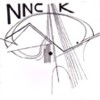 Apparently recorded on a Canal Street rooftop in New York, this double disc set documents the No-Neck Blues Band's first ever Orthodox Easter concert in 1996, an event they've repeated every year since. The group's tribal rhythms and crackling electronics have little to do with the Savior, though, and more to do with the strange world they create on their own.
Apparently recorded on a Canal Street rooftop in New York, this double disc set documents the No-Neck Blues Band's first ever Orthodox Easter concert in 1996, an event they've repeated every year since. The group's tribal rhythms and crackling electronics have little to do with the Savior, though, and more to do with the strange world they create on their own.
The first disc reveals the group's rattling, rusted electronic underbelly. "Montana Morning" sounds like a mechanic working on some of the instruments until a flute or a saxophone arises, accompanied by high-pitched pulses and muted drums. Supersonic beeping and feedback start "Isopropyl Ocean" with minute variations until a clattering cymbal propels the song forward. At over half an hour, this song doesn't come alive for me until the convulsions of the latter third or so. The last track on the first disc is mainly composed of a percussive drone and metallic percussion that could be a dead cymbal, underpinned by some blistering electronics that appear only too briefly and a saxophone that never really makes enough of a statement to make its influence felt.
If the first disc comes across as a warm-up session, the second disc finds the group firing on all cylinders. A hypnotic electronic pulse with subtle machine-like washes underneath begins "Cosmos," which after a few minutes is joined by a weird distorted line that elevates the song to a fantastic new level of otherworldliness until some disruptive static domineers the track until its close. "John the Baptist" is the rhythmic centerpiece of the second disc, if not the entire album. Starting with squeals and whistles, drums enter before long and provide a primitive rhythm that anchors the song, leaving screeches, various electronics, and static to enter and leave the mix as desired. The rhythmic changes are subtle but ultimately provide the most movement on which to focus attention. "Seven Spaces of Empty Place" sounds like a gurgling steamship about to sink, even ending with what could be an underwater S.O.S. bubbling to the surface.
At times the recording quality leaves a little to be desired, including occasional thumps against the microphone, and I wish that some of the noisier parts could have been balanced more evenly in the mix, especially on "John the Baptist," but overall such considerations didn't significantly affect my enjoyment of the songs. The album is a valuable document, and the second disc in particular is a stunning achievement.
samples:
Read More

